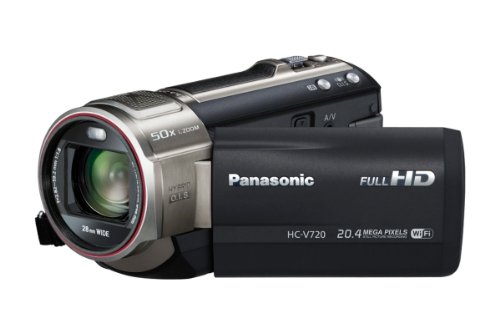I needed to make videos when I had this www.DarkroomDave.com website created. Unfortunately, I had no expertise in this area so had to rely on Google searches to educate me.
From a quick trawl of the web and a few tests with my wife’s Nikon D90 I could see that I needed a better camera than a digital SLR if I wanted to capture anything under darkroom safelights! A Camcorder seemed to be what I needed so after a bit of research I ended up with a Panasonic V720, said to work well under low light conditions. I also read quite a few reports of poor sound with built-in microphones so I added an Audio Technica external microphone (I bought a camcorder with a suitable socket for one of these!). In all I was set up for a bit under £400 (April 2014 prices).

I don’t need too many of the controls for what I’m doing so it didn’t take long to learn how to use it. I mostly need to use the widest focal length of 28mm, with the low light setting (better than any of night time modes). The screen rotates towards me so that I can see what I’m doing as I’m recording myself. Having to use a horizontal image goes against the grain in some cases, I can see the better composition would be with the camera vertical but the video needs to use the full width of the screen.
I have an iMac computer which comes with iMovie pre-installed so that was an obvious starting point for the editing. Unfortunately, the AVCHD file format from the camera is not handled by iMovie directly, it has to go via the QuickTime Player, also pre-installed on the iMac. This has an export command to convert to .mov file format.
Once in iMovie I could select chunks of video, delete unnecessary bits to shorten videos and make them easy to view, play them within the editor, to finesse each video. Edited videos are then exported (using the Share command) as an HD format file. Videos are then uploaded to my YouTube channel and copied in here to www.DarkroomDave.com Tutorials. YouTube automatically selects the quality level to play depending on your viewing device (such as HD for desktops and small files for mobile phones).
Sounds simple when you see it written down but it took several weeks of trying different options, while fitting it in around everything else that we do within the business.





